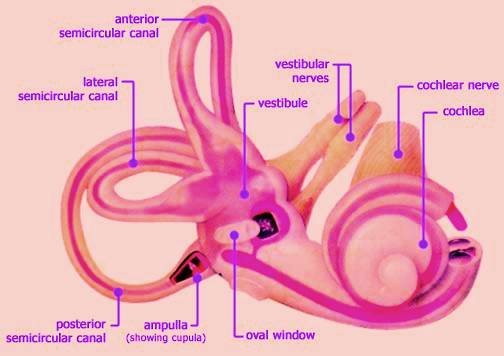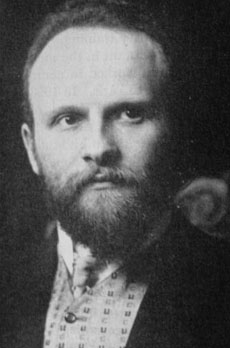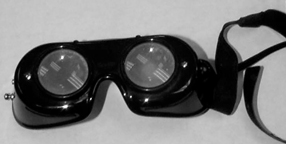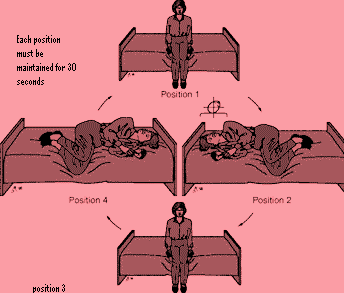Bppv

Take this quiz on BPPV. Before attempting kindly read up the topic from here.
- 1.
BPPV is commonly caused due to
- A.
Dysfunction involving utricle
- B.
Dysfunction involving saccule
- C.
Dysfunction involving posterior semicircular canal
- D.
Dysfunction involving endolymphatic sac
Correct Answer
C. Dysfunction involving posterior semicircular canalExplanation
BPPV is commonly caused by dysfunction involving posterior semicircular canal. On rare occasions superior and lateral canals too can be involvedRate this question:
-
- 2.
BPPV was first described by:
- A.
Barany
- B.
Neffson
- C.
Paperella
- D.
Portmann
Correct Answer
A. BaranyExplanation
This disorder was first described by Barany in 1921. He documented the various components of this disorder as 1. Nystagmus, 2. Fatiguability of the nystagmus and 3. Vertigo. He failed to correlate the onset of nystagmus with specific positions of the head.Rate this question:
-
- 3.
Unique features of Nystagmus of BPPV are
- A.
Very short latency
- B.
Directional features
- C.
Brief duration
- D.
Prolonged duration
- E.
Reversibility on coming out of provoking position
- F.
Irreversible
Correct Answer(s)
A. Very short latency
B. Directional features
C. Brief duration
E. Reversibility on coming out of provoking positionExplanation
Dix & Hallpike 1952 described the Dix Hallpike maneuver for eliciting the nystagmus. They also described the unique features of nystagmus accompanying this disorder. These features were 1. Very short latency, 2. Directional features, 3. Brief duration, and 4. Reversibility on returning the patient to a seated position.Rate this question:
-
- 4.
Describe Schuknecht's theory for BPPV.
- 5.
Hall and Ruby described two types of BPPV: BPPV with __________ Nystagmus BPPV with ____________ Nystagmus
Correct Answer(s)
Fatiguable and Non fatiguable nystagmus - 6.
Canal lithiasis theory was proposed to account for BPPV by
- A.
Schuknecht
- B.
Hall and Ruby
- C.
Dix Hallpike
- D.
Paperella
Correct Answer
B. Hall and Ruby -
- 7.
Describe the typical features of BPPV.
- 8.
In Dix Hallpike maneuver the patient is placed
- A.
In supine position
- B.
In prone position
- C.
In sitting position
- D.
In supine position with head hanging down from the edge of the couch
Correct Answer
D. In supine position with head hanging down from the edge of the couch -
- 9.
Describe in detail Dix Hallpike maneuver
- 10.
Lateral canal BPPV can be identified by
- A.
Dix Hallpike maneuver
- B.
Doll's eye movement
- C.
Lack of righting reflex
- D.
Variation of Dix Hallpike maneuver
Correct Answer
D. Variation of Dix Hallpike maneuver -
- 11.
Frenzel's glasses should be used by
- A.
Observer
- B.
Patient
- C.
Patient and observer
- D.
By everyone present in the examination room
Correct Answer
B. Patient -
- 12.
Describe in detail Epley's maneuver
- 13.
In Epley Maneuver the patient is placed in
- A.
Dix Hallpike position
- B.
Prone position
- C.
Supine position with head raised by 30 degrees
- D.
Prone position with head hanging out from the edge of the couch
Correct Answer
A. Dix Hallpike position -
- 14.
In Dix Hallpike position
- A.
The posterior canal is horizontal to earth's vertical plane
- B.
The lateral canal is vertical to the earth's axis
- C.
The posterior canal is in the earth's vertical plane
- D.
The superior canal is in the earth's vertical plane
Correct Answer
C. The posterior canal is in the earth's vertical plane -
- 15.
Vibrator therapy for BPPV is contraindicated in patients with
- A.
COPD
- B.
Retinal detachment
- C.
Ear discharge
- D.
Meniere's disease
Correct Answer
B. Retinal detachment -
- 16.
After repositioning maneuvers patient is asked to
- A.
Sleep without a pillow for 2 days
- B.
Sleep with head turned to one side (affected) for 2 days
- C.
Sleep with head elevated to 45 degrees for 2 days
Correct Answer
C. Sleep with head elevated to 45 degrees for 2 days -
- 17.
Which repositioning maneuver can be perfromed by the patient himself?
- A.
Dix Hallpike Maneuver
- B.
Semont's maneuver
- C.
Brandt Droff maneuver
- D.
Ruby maneuver
Correct Answer
C. Brandt Droff maneuver -
- 18.
Describe the maneuver shown above.
- 19.
Name the surgical procedures used in the management of Intractable BPPV.
- A.
Singular neurectomy
- B.
Posterior semicircular canal plugging procedure
- C.
Modified radical mastoidectomy
- D.
Grommet insertion
Correct Answer(s)
A. Singular neurectomy
B. Posterior semicircular canal plugging procedure -
- 20.
Singular neurectomy is useful in the mangement of intractable BPPV because
- A.
Singular nerve supplies the posterior semicircular canal
- B.
Singular nerve supplies all three semicircular canals
- C.
Singular nerve supplies utricle, saccule and lateral semicircular canals
- D.
Singular nerve supplies the entire labyrinth
Correct Answer
A. Singular nerve supplies the posterior semicircular canal -
Quiz Review Timeline +
Our quizzes are rigorously reviewed, monitored and continuously updated by our expert board to maintain accuracy, relevance, and timeliness.
-
Current Version
-
Jan 28, 2013Quiz Edited by
ProProfs Editorial Team -
Aug 02, 2011Quiz Created by
Drtbalu
- Addiction Quizzes
- AIDS Quizzes
- Allergic Quizzes
- Allergy Quizzes
- Alzheimer Quizzes
- Anemia Quizzes
- Arthritis Quizzes
- Asthma Quizzes
- Bipolar Disorder Quizzes
- Burn Quizzes
- Cancer Quizzes
- Cerebral Palsy Quizzes
- COPD Quizzes
- Dengue Quizzes
- Depression Quizzes
- Diabetes Quizzes
- Gastrointestinal Disease Quizzes
- Headache Quizzes
- Hypertension Quizzes
- Infectious Disease Quizzes
- Insomnia Quizzes
- Lung Cancer Quizzes
- Lung Disease Quizzes
- Neoplasia Quizzes
- Obesity Quizzes
- Osteoporosis Quizzes
- Pandemic Quizzes
- Personality Disorder Quizzes
- Pneumonia Quizzes
- Pulmonology Quizzes
- Sexually Transmitted Disease Quizzes
- Sinus Quizzes
- SLE Quizzes
- Stroke Quizzes
- Thyroid Disease Quizzes
- Tuberculosis Quizzes
- Ulcer Quizzes
- Viral Quizzes
 Back to top
Back to top






